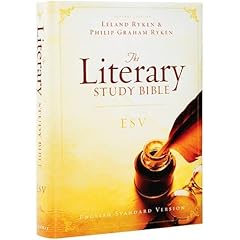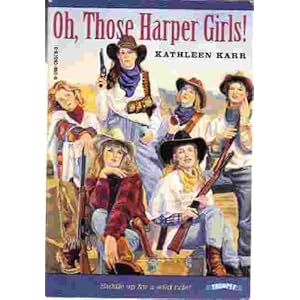 For the last couple of years, instead of resolutions, I’ve been thinking in terms of projects, lots of projects that I wanted to complete during the year. I wouldn’t say I was any more or less successful with my projects than most people are with resolutions, but I like the tradition anyway and plan to to continue it this year. So here are my twelve projects for 2010, with evaluations of how I did on some of the same projects in 2009.
For the last couple of years, instead of resolutions, I’ve been thinking in terms of projects, lots of projects that I wanted to complete during the year. I wouldn’t say I was any more or less successful with my projects than most people are with resolutions, but I like the tradition anyway and plan to to continue it this year. So here are my twelve projects for 2010, with evaluations of how I did on some of the same projects in 2009.
1. Bible Reading Project. Last year’s Bible reading project was a qualified success. I didn’t read every day, and I didn’t study the books and passages I chose as intensely as I wanted, but I did read and study some. This year’s Bible reading plan is the same as last year’s: choose a book or part of a book of the BIble for each month of the year, read it daily, and study it using some good study tools. Take notes in my Bible and maybe this year in a journal, too. The selections for this year:

January: Esther. The women of my church are going on retreat in early March, and we’ll be studying the book of Esther. So I thought I’d get a head start.
February: Revelation 1-11. My pastor is preaching through Revelation this spring, so I thought I should be reading it. Revelation is my least favorite book in the Bible, so I’ll need some major self-discipline and encouragement from the Holy Spirit to finish this project.
March: Exodus 1-12 in preparation for Resurrection Sunday (April 4, 2010) and remembering Jesus, our Passover lamb.
April: Revelation 12-22.
May: Exodus 13-20.
June: I Timothy
July: Exodus 21-30.
August: II Timothy
September: Exodus 31-40.
October: Titus
November: Psalms 11-15.
December: Psalms 16-20.
2. Pulitzer Project. This year for the Pulitzer Project I read Andersonville by MacKinlay Kantor and found it very absorbing and thought-provoking, one of the best books I read this past year. This next year I plan to read March by Geraldine Brooks and Olive Kitteridge by Elizabeth Strout.

3. My Newbery Project for last year was also something of a bust. I think I got stuck because the winners for 1925 and 1926 were both story collections, and I don’t like story collections. I may skip the storybooks and get back on track this year.
4. Homeschooling Project: I need to focus on homeschooling the three remaining students in our homeschool.
Karate Kid (age 12)
Betsy-Bee (age 10)
Z-Baby (age 8)
You’ll see posts about how that project is going, plans for school and reading and science and history and field trips and all manner of educational schemes and visions. Perhaps you’ll also see a few desperate pleas for HELP! Just because I’ve graduated four students doesn’t mean I know how to homeschool the rest of the bunch.
5. Operation Clean House. I thought last year that if I took a room or area of the house and concentrated on that section each month, I might get somewhere with the de-cluttering and cleaning. Maybe. I didn’t. So this project is a repeat.
January: My closet and dressing area.
February: The rest of my bedroom.
March: Front hallway and entryway.
April: Living Room.
May: Kitchen.
June: Laundry room.
July: Half of the gameroom.
August: The other half of the gameroom.
September: Front bathroom.
October: Z-baby’s bedrooom.
November: Karate Kid’s bedroom.
December: Sit back and enjoy my reorganized home?
I might even, if I’m brave enough, post before and after pictures to keep myself motivated.
6. LOST Reading Project. I really want to get back to this project this year. I read Lathe of Heaven by Ursula LeGuin, enjoyed it, and tried a couple of others on the list that I didn’t care for at all (A Clockwork Orange by Anthony Burgess and The Third Policeman by Flann O’Brien).
This year I think I’d like to read Laughter in the Dark by Vladimir Nabakov and perhaps, Everything That Rises Must Converge by Flannery O’Connor. I’m not sure I’m sophisticated enough to “get” Flannery O’Connor, but I’ll give it a try.
7. The U.S. Presidents Reading Project has a list of all of the U.S. presidents and suggested reading selections (non-fiction) for each one. The challenge is to read one biography of each one. Last year I read biographies of George Washington, John Adams, James and Dollie Madison, and Alexander Hamilton (I know, not a president, but closely related). This year I plane to continue with biographies of James Monroe, John Quincy Adams, and Andrew Jackson, not necessarily in that order. I skipped Jefferson because I don’t like him very much.

8. Tournament of Reading Project. Probably the only reading challenge I sign up for this year, The Tournament of Reading is a challenge to read nine medieval books in three categories: history, medieval literature, and historical fiction. Most of these books that I plan to read come from my TBR list anyway:
History:
Byzantium by John Julius Norwich.
Justinian’s Flea: The First Great Plague and The End of the Roman Empire by WIlliam Rosen.
Historical Fiction:
The King’s Daughter by Sandra Worth.
The Last Queen by C.W. Gortner.
The Master of Verona by David Blixt.
As for actual medieval literature, I’ll have to ask Eldest Daughter to suggest something.
9. Poetry Project: I would like to continue having my urchins memorizing and reading poetry. I would like to read and memorize poetry. I would like to have more Poetry Parties. Poetry Friday is the place and time to get an update on the Poetry Project. Plus, I’ll be celebrating Poetry Month again in April.
10. Prayer Project. I need to spend some daily concentrated time in prayer and meditation. My plan is to pray and read my Bible before I get on the computer each day so that I can bathe all these projects and all my children and my husband in prayer.
11. Book Club Project. I’m re-starting my book club this year. If any of you are interested in participating (virtually), email me at sherryDOTearlyATgmailDOTcom, and I’ll send you the details. I’ll also be posting the book club selections for each month of 2010 here at Semicolon soon. I’m also leading a middle school girls book club at our homeschool co-op, and I’ll be posting the book list for that club before long.
12. Advanced Reading Survey Project. I decided last year that on Mondays I was going to revisit the books I read for a course in college called Advanced Reading Survey, taught by the eminent scholar and lovable professor, Dr. Huff. I’m not going to re-read all the books and poems I read for that course, probably more than fifty, but I am going to post to Semicolon the entries in the reading journal that I was required to keep for that class because I think that my entries on these works of literature may be of interest to readers here and because I’m afraid that the thirty year old spiral notebook in which I wrote these entries may fall apart ere long. I may offer my more mature perspective on the books, too, if I remember enough about them to do so.
Texas Tuesday Project. I also plan to keep posting about books set in or published in or related to Texas on Tuesdays. Or at least on most Tuesdays.
Bonus Project: I’ll keep blogging, the Good Lord willing and the creek don’t rise, and I’ll keep you all updated on all my projects for 201-.
 The Harper girls live in Texas, in 1869, just after the Civil War, with their refined mother and their ne’er-do-well daddy on the Double H Ranch. Unfortunately, the bank is going to foreclose on the Double H if the Harpers can’t come up with enough money to pay off daddy’s bank loan. Fortunately, Daddy H has a plan. Unfortunately, the plan involves rustling some of the neighbor’s cattle and re-branding them with the Double H brand. Fortunately, the girls fail at cattle rustling. Unfortunately, Daddy has another plan . . . etc, etc, etc.
The Harper girls live in Texas, in 1869, just after the Civil War, with their refined mother and their ne’er-do-well daddy on the Double H Ranch. Unfortunately, the bank is going to foreclose on the Double H if the Harpers can’t come up with enough money to pay off daddy’s bank loan. Fortunately, Daddy H has a plan. Unfortunately, the plan involves rustling some of the neighbor’s cattle and re-branding them with the Double H brand. Fortunately, the girls fail at cattle rustling. Unfortunately, Daddy has another plan . . . etc, etc, etc.









